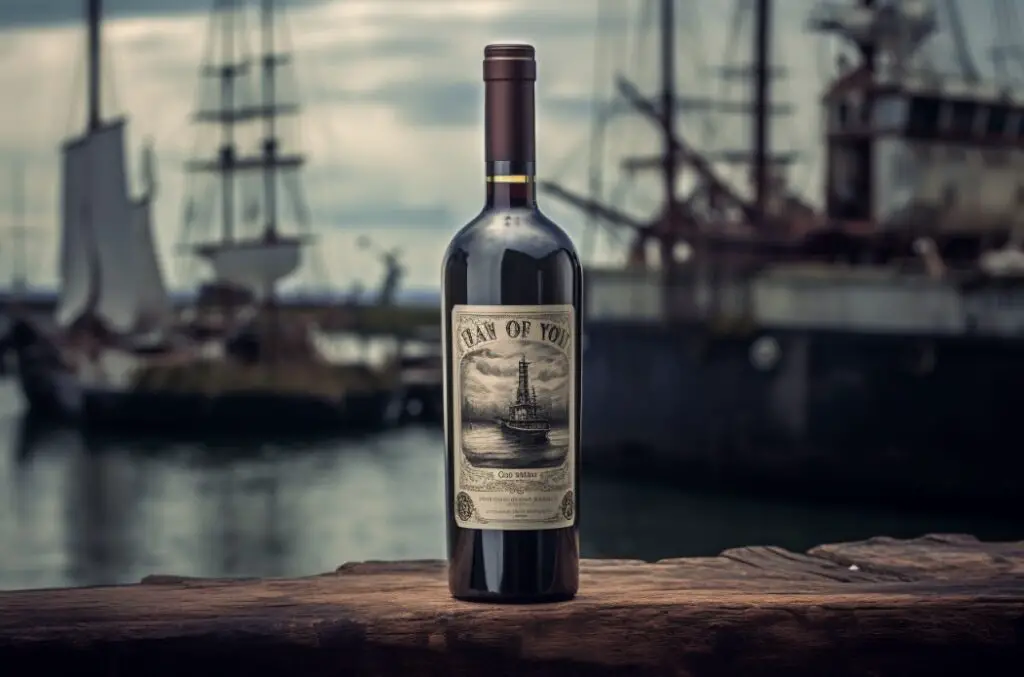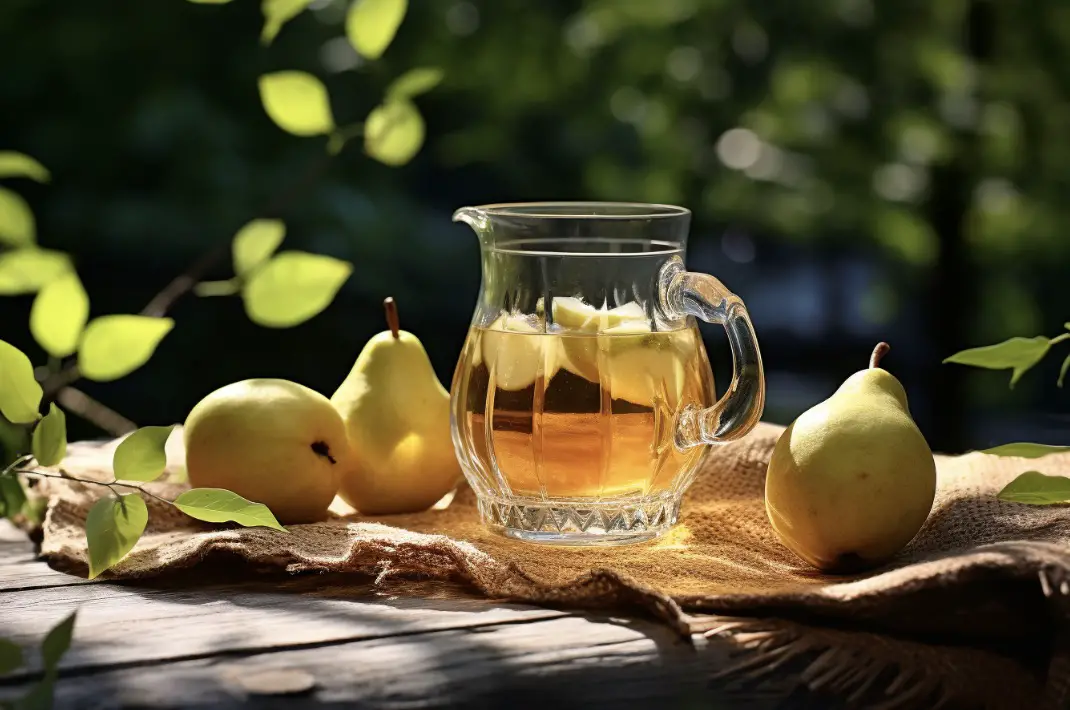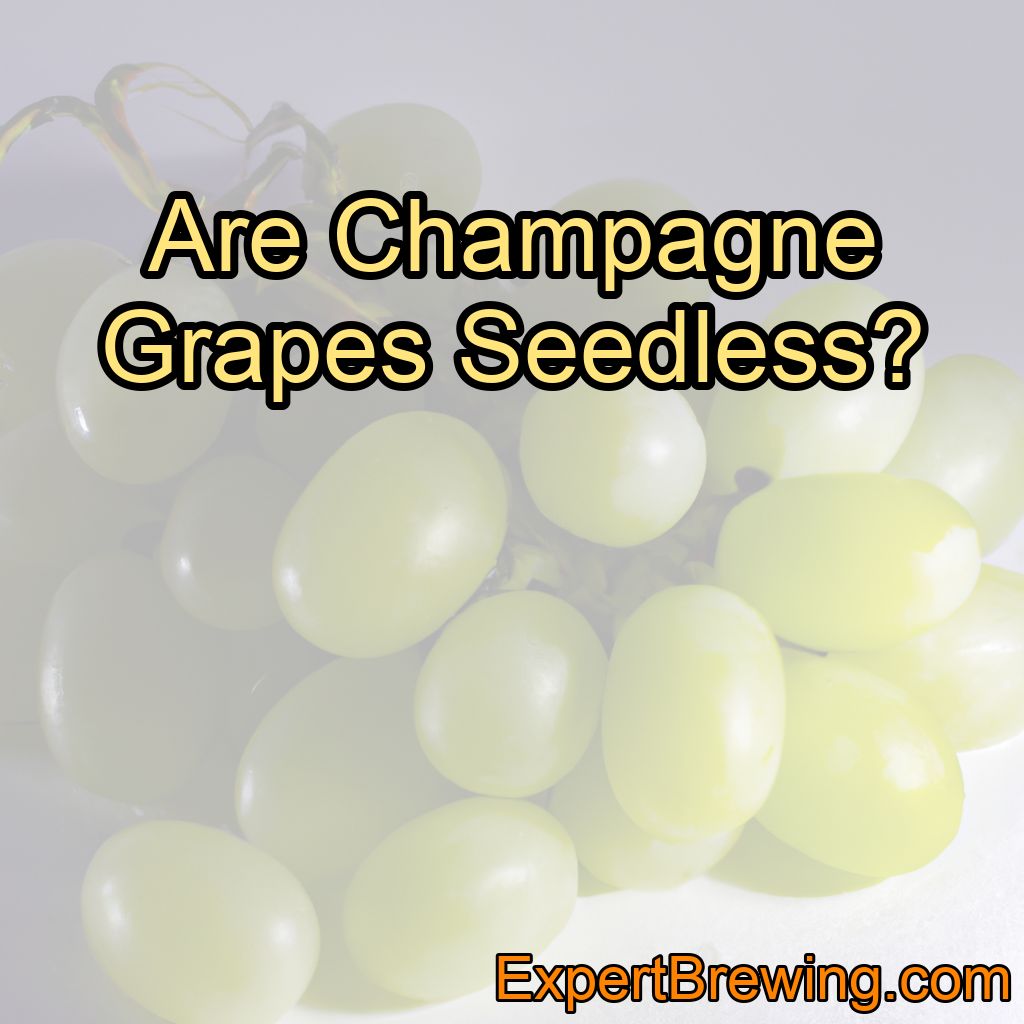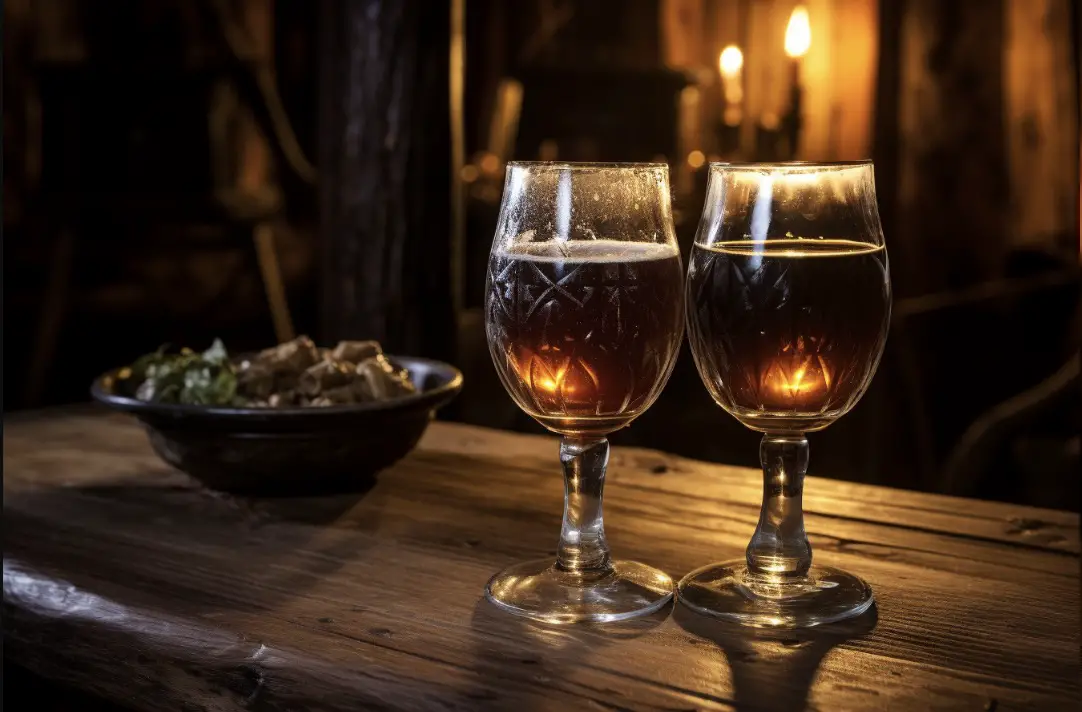Taylor Port and Tawny Port are two different styles of port wine that can often cause confusion among wine enthusiasts.
While both are derived from the same grape varieties and produced in the Douro Valley of Portugal, they differ in taste, aging process, and overall characteristics.
In this blog post, we will delve into the differences between these two distinct styles of port wine and help you make an informed decision on which one to enjoy.
The main difference between Taylor Port and Tawny Port lies in their aging process. Taylor Port is a Ruby Port, while Tawny Port undergoes a longer aging process in oak barrels, giving it a unique flavor profile and distinguishing characteristics.
What is Port Wine?
Port wine is a fortified wine produced in the Douro Valley region of Portugal. It is made by adding a neutral grape spirit known as aguardente to the grape juice during the fermentation process, which halts the fermentation and retains the natural sweetness of the grapes.

This results in a higher alcohol content and a distinct sweet flavor. Port wine is typically enjoyed as a dessert wine or as an after-dinner drink.
Types of Port Wine
There are several types of port wine, including Ruby Port, Tawny Port, White Port, and Vintage Port. Ruby and Tawny Ports are the most commonly available and consumed styles.
To fully appreciate the nuances of port wine, it’s essential to understand the different types that are available:
- Ruby Port
- Characteristics: This is the most basic and youngest style of Port. It has a deep red color and is typically fruity, with flavors reminiscent of berries, plums, and cherries.
- Aging: Ruby Port is aged in large oak vats for two to three years before it’s bottled, allowing it to retain its rich red color and fresh fruit flavors.
- Pairings: It pairs well with blue cheeses, chocolate desserts, and berries.
- Tawny Port
- Characteristics: Tawny Ports are aged for a longer period in wooden casks, allowing them to develop a nutty, caramel-like flavor. Their color is lighter than Ruby Ports, often with a golden-brown hue.
- Aging: They can be aged for various durations, with age indications on the bottle like 10, 20, 30, or even 40 years. These age indications represent a blend’s average age.
- Pairings: They pair exceptionally well with almond tarts, crème brûlée, and other creamy desserts.
- White Port
- Characteristics: Made from white grapes, White Port is often overlooked but offers a unique flavor profile. It can range from dry to very sweet.
- Aging: While most White Ports are meant to be consumed young, some aged versions exist which possess more complexity.
- Pairings: Dry White Port can be served chilled as an aperitif, while sweeter versions match well with desserts like fruit tarts or custard.
- Vintage Port
- Characteristics: Considered the king of Ports, Vintage Port is made from the best grapes in exceptional years. It has intense flavors of dark fruit, chocolate, and spices.
- Aging: While it’s bottled relatively young (around 2 years of age), it has the potential to age and develop in the bottle for decades.
- Pairings: It pairs wonderfully with rich cheeses, dark chocolate, and robust meats.
Besides these primary styles, there are other lesser-known types of Port such as LBV (Late Bottled Vintage), Crusted, and Colheita. Each type of Port offers a unique experience and is an exploration of the terroir, grape varieties, and wine-making traditions of the Douro Valley. Whether you’re a seasoned Port aficionado or a curious novice, there’s always a bottle of Port out there that can provide a delightful tasting experience.
Taylor Port: A Ruby Port Style
Taylor Port is a type of Ruby Port. Ruby Ports are the youngest and most accessible style of port wine, often aged for just a few years in large oak vats before being bottled.

This short aging period results in a wine that is bright, fresh, and fruity, with a deep ruby color.
Flavor Profile and Pairings
The flavor profile of Taylor Port is typically rich and fruity, with notes of red berries, plums, and cherries. The sweetness and high alcohol content make it a great pairing for rich desserts and strong cheeses. Some popular pairings include chocolate desserts, blue cheese, and nuts.
Tawny Port: A Unique Aging Process
Tawny Port, on the other hand, undergoes a much longer aging process in small oak barrels, sometimes up to 40 years. This extended aging period allows the wine to develop a unique flavor profile and characteristics not found in younger Ruby Ports like Taylor Port. The color of Tawny Port ranges from a pale amber to a deep reddish-brown, depending on the age.

Flavor Profile and Pairings
Tawny Port is characterized by its smooth, nutty, and caramel flavors, with notes of dried fruits, toffee, and spices. The complexity and depth of flavors in Tawny Port make it an ideal match for a wide variety of desserts and cheeses. Pair it with creamy desserts, fruit tarts, or aged cheeses for a delightful culinary experience.
Vintage Port: The Cream of the Crop
While not the main focus of this article, it’s worth briefly mentioning Vintage Port, which is considered the pinnacle of port wine production.
Vintage Port is made from the finest grapes and aged in oak barrels for a minimum of two years before being bottled. These wines can age for decades, developing incredible complexity and depth of flavor.
Price Point: Taylor Port vs Tawny Port
In general, Taylor Port, as a Ruby Port, is more affordable than Tawny Port, making it an excellent option for those looking to enjoy port wine without breaking the bank.
However, Tawny Port offers a unique flavor profile and can be well worth the investment for those seeking a more complex and nuanced tasting experience.
Serving and Storing Port Wine
Both Taylor Port and Tawny Port should be served at room temperature and can be enjoyed on their own or with food pairings. Once opened, a bottle of port wine can last for several weeks if properly stored in a cool, dark place with a stopper.
Conclusion: Which Port Wine is Right for You?
In summary, the choice between Taylor Port and Tawny Port comes down to personal preference and the specific tasting experience you’re seeking.
10 Key Facts about Taylor Port and Tawny Port:
1. Both are styles of port wine, originating from the Douro Valley in Portugal.
2. Taylor Port is a Ruby Port, while Tawny Port undergoes a longer aging process.
3. Port wine is fortified with aguardente, resulting in high alcohol content and sweetness.
4. Ruby Ports like Taylor Port are characterized by their bright, fruity flavors.
5. Tawny Ports develop nutty, caramel, and dried fruit flavors through extended aging.
6. Vintage Port is considered the highest quality port wine, made from select grapes and aged for decades.
7. Taylor Port is generally more affordable than Tawny Port.
8. Both Taylor and Tawny Ports should be served at room temperature.
9. Once opened, port wine can last for several weeks if properly stored.
10. The choice between Taylor and Tawny Port ultimately comes down to personal preference and desired flavor profile.
FAQs
What is the difference between Taylor Port and Taylor Tawny Port?
Taylor Port and Taylor Tawny Port are both types of fortified wines produced by Taylor Fladgate, one of the oldest and most respected Port wine houses in Portugal. While they share similarities, there are some key differences between the two:
1. Aging Process: The main difference lies in the aging process. Taylor Port is typically aged for a shorter period, usually around two to three years, which results in a wine that retains more of its fruity and vibrant characteristics.
In contrast, Taylor Tawny Port is aged for a longer period, often between ten to forty years or more. This extended aging in wooden barrels allows the wine to oxidize and develop a range of complex flavors, including nutty, caramel, and dried fruit notes. The aging process also imparts a tawny color to the wine, hence the name.
2. Flavor Profile: Taylor Port is known for its rich and fruity flavors, with prominent notes of ripe berries, cherries, and sometimes a touch of chocolate. It tends to be sweeter and fresher compared to Tawny Port.
On the other hand, Taylor Tawny Port exhibits a more mellow and complex flavor profile. The extended oxidative aging contributes to a nuttier taste, with hints of almonds, walnuts, and caramelized sugar. It may also have undertones of dried fruits like raisins, figs, and dates.
3. Serving Temperature: Due to their distinct flavor profiles, Taylor Port and Taylor Tawny Port are often served at different temperatures. Taylor Port is typically served slightly chilled, around 12-14°C (54-57°F), to enhance its fruitiness and refreshing qualities.
Taylor Tawny Port, however, is best enjoyed at a slightly warmer temperature, around 15-18°C (59-64°F). This allows the wine to express its complex aromas and flavors more fully.
In summary, Taylor Port is a younger, fruit-forward, and sweeter style of Port, while Taylor Tawny Port is an aged, complex, and nuttier wine with a tawny color. Both offer distinct experiences and can be enjoyed on different occasions or paired with various foods.
Is Port wine tawny?
Yes, Port wine can be tawny. Tawny Port is a style of Port wine that has been aged in wooden barrels, allowing it to develop a mellow, nutty flavor and a tawny or brownish color. The aging process also results in a smoother and more complex taste profile compared to younger Ports. Tawny Ports are typically made from a blend of different vintages and can be aged for various lengths of time, such as 10, 20, 30, or even over 40 years.
Which is sweeter Port or tawny port?
Tawny port is typically sweeter than regular port. Regular port, also known as Ruby port, is aged for a shorter period in large oak casks, which preserves its vibrant red color and fruity flavors. On the other hand, tawny port is aged for a longer period in smaller oak barrels, allowing it to develop a mellow, nutty character and a deeper amber color. During this aging process, tawny ports gradually oxidize, resulting in a sweeter taste profile with notes of caramel, toffee, and dried fruits. Therefore, if you prefer a sweeter style, tawny port would be a great choice.
What is the difference between tawny and Port wine?
Tawny and Port wines are both fortified wines with distinct characteristics. The main differences lie in their aging process, grape varieties used, and flavor profiles.
1. Aging Process: Tawny wines are aged in wooden barrels, typically made of oak, which allows for slow oxidation and evaporation. This extended aging process imparts a nutty, caramelized flavor and a lighter color to the wine. On the other hand, Port wines are aged in large vats or stainless steel tanks and are then bottled with minimal aging. This results in a rich, fruity, and full-bodied wine.
2. Grape Varieties: Tawny wines are often made from a blend of red grape varieties, including Touriga Nacional, Touriga Franca, Tinta Roriz (Tempranillo), and Tinta Barroca. Port wines, specifically those labeled as “Porto” or “Port,” are produced from a specific set of grape varieties native to the Douro Valley in Portugal, including Touriga Nacional, Touriga Franca, Tinta Roriz, Tinta Barroca, and others.
3. Flavor Profiles: Tawny wines exhibit flavors of dried fruits, nuts, caramel, toffee, and sometimes a hint of spice. They are typically lighter-bodied and have a smoother, silkier texture. Port wines, on the other hand, are known for their intense flavors of ripe berries, dark fruits, chocolate, and sometimes floral or herbal notes. They are fuller-bodied with more tannins and a higher alcohol content.
It’s worth noting that within the category of Port wines, there are different styles such as Ruby, Vintage, Late Bottled Vintage (LBV), and Tawny Port. The latter is a specific type of Port wine that undergoes extended aging in wooden barrels, resulting in a tawny color and unique flavor profile.
In summary, while both tawny and Port wines are fortified wines, the key differences lie in their aging process, grape varieties used, and resulting flavor profiles. Tawny wines are aged in wooden barrels, have a nutty caramelized flavor, and are made from a blend of red grape varieties. Port wines, specifically those labeled as “Porto” or “Port,” are aged for a shorter period, have a rich fruity flavor, and are made from specific grape varieties native to the Douro Valley.
Is port and tawny the same?
No, port and tawny are not the same, although they are both types of fortified wines. Port is a specific style of fortified wine that originates from the Douro Valley in Portugal. It is typically made from a blend of red grape varieties, such as Touriga Nacional, Touriga Franca, Tinta Roriz, and Tinta Barroca. Ports are aged in oak barrels and are known for their rich, sweet, and full-bodied characteristics. They can be either red or white, with the most common types being Ruby Port, Vintage Port, Late Bottled Vintage (LBV) Port, and Tawny Port.
On the other hand, Tawny Port is a specific style of port that undergoes extended aging in oak barrels, resulting in a lighter color and a more oxidative style. Tawny Ports are aged for a minimum of two years, but some can be aged for much longer, even up to 40 years or more. This extended aging process imparts nutty, caramel, and dried fruit flavors to the wine, giving it a distinct taste profile. Tawny Ports are typically lighter and less sweet than Ruby Ports, with a more delicate and complex character.
In summary, while both port and tawny are fortified wines, port refers to a broader category of fortified wines from the Douro Valley, while tawny is a specific style of port characterized by extended oak aging, resulting in a lighter color and more oxidative flavors.
Is Taylor Tawny Port sweet or dry?
Taylor Tawny Port is a sweet fortified wine. Tawny Ports are typically aged in wooden barrels, which allows them to develop a mellow and nutty flavor profile. While there may be variations in sweetness levels among different Tawny Ports, Taylor Tawny Port is known for its rich sweetness, with flavors of caramel, dried fruits, and nuts.





